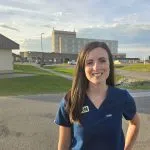
Organization wants province to bring nurse practitioner program back
Rural communities in Saskatchewan are facing medical shortages and are looking to add to their medical arsenal.
As a result, Saskatchewan Association of Rural Municipalities (SARM) wants the provincial government to bring back their Grow Your Own Nurse Practitioner Program.
During the organization’s mid-term convention last fall, the Saskatchewan Association of Nurse Practitioners (SANP) gave a presentation in which they relayed concerns they were seeing in smaller communities around the province.
“We’ve heard concerns from our members too and this is a relationship to getting enough nurse practitioners out in rural Saskatchewan,” said Ray Orb, SARM president of their efforts to make sure clinics and smaller hospitals have staff available.


